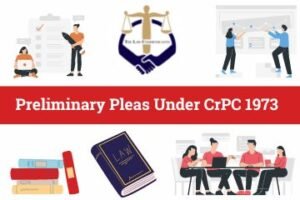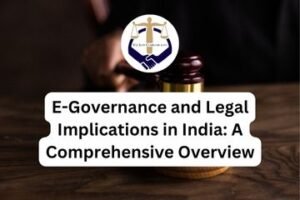Freedom of Speech vs. Hate Speech: A Legal Perspective
Table of Contents
- Introduction
- Understanding Freedom of Speech and Hate Speech
- Legal Framework in India
- Judicial Pronouncements
- The Balancing Act: Freedom of Speech vs. Hate Speech
- Conclusion
Introduction
Freedom of speech is a fundamental right enshrined in many democratic constitutions worldwide, including the Indian Constitution. However, the exercise of this right often intersects with the need to protect individuals and communities from hate speech. The balance between upholding freedom of speech and curbing hate speech is a delicate one, involving complex legal, ethical, and social considerations. This article delves into the legal perspective on freedom of speech versus hate speech, focusing on their definitions, the legal framework in India, significant judicial pronouncements, and the ongoing debate on how best to balance these conflicting interests.
Understanding Freedom of Speech and Hate Speech
Freedom of Speech
Freedom of speech is the right to express one’s opinions and ideas without fear of government retaliation or censorship. In India, this right is guaranteed under Article 19(1)(a) of the Constitution, which states that all citizens shall have the right to freedom of speech and expression. This freedom is not absolute and is subject to reasonable restrictions as provided in Article 19(2), including interests of the sovereignty and integrity of India, the security of the state, friendly relations with foreign states, public order, decency, morality, and incitement to an offense.
Hate Speech
Hate speech, on the other hand, refers to any speech, gesture, conduct, writing, or display that incites violence or prejudicial action against a particular group or individual based on attributes such as race, religion, ethnic origin, sexual orientation, disability, or gender. Hate speech aims to demean, intimidate, or incite violence or prejudicial action against an individual or a group. The challenge lies in distinguishing between permissible free speech and hate speech that warrants legal intervention.
Legal Framework in India
Constitutional Provisions
- Article 19(1)(a): Guarantees the right to freedom of speech and expression to all citizens.
- Article 19(2): Permits the state to impose reasonable restrictions on the exercise of this right in the interests of the sovereignty and integrity of India, security of the state, friendly relations with foreign states, public order, decency, morality, or in relation to contempt of court, defamation, or incitement to an offense.
Statutory Provisions
- Indian Penal Code (IPC), 1860:
- Section 124A: Addresses sedition, penalizing speech that brings or attempts to bring hatred, contempt, or disaffection towards the government.
- Section 153A: Criminalizes the promotion of enmity between different groups on grounds of religion, race, place of birth, residence, language, etc., and acts prejudicial to the maintenance of harmony.
- Section 295A: Penalizes deliberate and malicious acts intended to outrage religious feelings of any class by insulting its religion or religious beliefs.
- Section 505: Punishes statements conducing to public mischief, including making, publishing, or circulating any statement, rumor, or report with intent to incite, or which is likely to incite, any community or group to commit an offense against any other community or group.
Information Technology Act, 2000
- Section 66A: Previously criminalized sending offensive messages through communication services, but was struck down by the Supreme Court in the landmark judgment of Shreya Singhal v. Union of India (2015) for being vague and overly broad, infringing on the right to freedom of speech and expression.
Judicial Pronouncements
Shreya Singhal v. Union of India (2015)
In this landmark case, the Supreme Court of India struck down Section 66A of the IT Act, emphasizing the importance of clear and precise legislation when it comes to regulating speech. The Court held that Section 66A was unconstitutional as it violated the right to freedom of speech and expression. The judgment underscored the need for any restriction on speech to be reasonable and narrowly tailored.
Pravasi Bhalai Sangathan v. Union of India (2014)
The Supreme Court addressed the issue of hate speech and its regulation. The Court recognized the need to balance free speech with the protection of public order and morality. It highlighted the importance of legislative measures to curb hate speech while ensuring they do not encroach upon legitimate free speech.
Subramanian Swamy v. Union of India (2016)
The Supreme Court upheld the constitutionality of criminal defamation under Sections 499 and 500 of the IPC, ruling that the right to freedom of speech and expression is not absolute and can be curtailed to protect the reputation and dignity of individuals. This judgment reinforced the principle that speech which harms another’s reputation or incites hatred can be legally restricted.
The Balancing Act: Freedom of Speech vs. Hate Speech
Ethical and Social Considerations
The debate over freedom of speech and hate speech involves not only legal principles but also ethical and social considerations. On one hand, freedom of speech is essential for democratic discourse, individual autonomy, and the pursuit of truth. On the other hand, hate speech undermines social cohesion, incites violence, and perpetuates discrimination against marginalized groups.
International Perspectives
International human rights instruments, such as the International Covenant on Civil and Political Rights (ICCPR), recognize the right to freedom of expression but allow for restrictions in certain circumstances, including the protection of the rights and reputations of others, national security, public order, public health, or morals. The challenge lies in ensuring that restrictions are justified, necessary, and proportionate.
Proposed Solutions
- Clear Legislation: There is a need for clear and precise legislation that defines hate speech, sets out the conditions under which speech can be restricted, and provides safeguards against abuse.
- Public Awareness: Educating the public about the harms of hate speech and the importance of respectful dialogue can help mitigate the impact of harmful speech.
- Judicial Oversight: Robust judicial oversight is necessary to ensure that restrictions on speech are applied fairly and consistently, and that individuals’ rights are protected.
- Balanced Approach: A balanced approach that protects free speech while addressing the harms of hate speech is crucial. This includes considering the context, intent, and potential impact of the speech in question.
Conclusion
The tension between freedom of speech and hate speech is a complex and evolving issue, requiring a nuanced understanding of legal principles, ethical considerations, and social dynamics. While freedom of speech is a cornerstone of democratic society, it is not absolute and must be balanced against the need to protect individuals and communities from harm. By fostering clear legislation, public awareness, and judicial oversight, societies can navigate the delicate balance between upholding free speech and curbing hate speech, ensuring that both individual rights and social harmony are preserved.




